1775 – The Continental Congress passed a resolution stating that “two Battalions of Marines be raised” for service as landing forces for the recently formed Continental Navy. The resolution, drafted by future U.S. president John Adams, created the Continental Marines and is now observed as the birth date of the United States Marine Corps.
1808 – In a decision that would eventually make them one of the wealthiest surviving Indian nations, the Osage Indians agreed to abandon their lands in Missouri and Arkansas in exchange for a reservation in Oklahoma.
Most Indian tribes were devastated by these relocations, including some of the Southern Sioux tribes like the Kansa, whose population of 1,700 was reduced to only 194 following their disastrous relocation to a 250,000-acre reservation in Kansas. The Osage, though, proved unusually successful in adapting to the demands of living in a world dominated by Anglo-Americans, thanks in part to the fortunate presence of large reserves of oil and gas on their Oklahoma reservation. In concert with their effective management of grazing contracts to Anglos, the Osage amassed enormous wealth during the twentieth century from their oil and gas deposits, eventually becoming the wealthiest tribe in North America.
1847 – Passenger ship Stephen Whitney was wrecked in thick fog off the southern coast of Ireland, killing 92 of the 110 on board. Captain C.W. Popham had been confused in the foggy weather and mistook the Crookhaven lighthouse for the one at the Old Head of Kinsale.
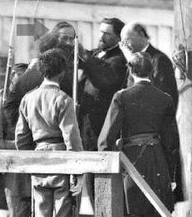
1865 – Henry Wirz, the commander of Andersonville prison in Georgia, was hanged in the courtyard of the Old Capitol Prison on what is now the site of the U.S. Supreme Court. Wirz had been found guilty of the murder of soldiers incarcerated at Andersonville during the Civil War. While both sides incarcerated prisoners under horrible conditions, Andersonville deserves special mention for the inhumane circumstances under which its inmates were kept.
A stockade held thousands of men on a barren, polluted patch of ground. Barracks were planned but never built; the men slept in makeshift housing, called “shebangs,” constructed from scrap wood and blankets that offered little protection from the elements. A small stream flowed through the compound and provided water for the Union soldiers, but this became a cesspool of disease and human waste. Erosion caused by the prisoners turned the stream into a huge swamp. The prison was designed to hold 10,000 men but the Confederates had packed it with more than 31,000 inmates by August 1864.
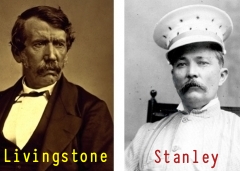
1871 – Henry Stanley found the missing Scotsman, David Livingstone. Livingstone, an explorer and missionary, had been missing for two years. No white man had seen him in six years. Through a promotion sponsored by “The New York Herald”, Stanley and several companions set out looking for Livingstone some eight months earlier. Stanley’s search for Dr. Livingstone ended at Ujiji, Africa. He greeted the doctor with, “Dr. Livingstone, I presume?”
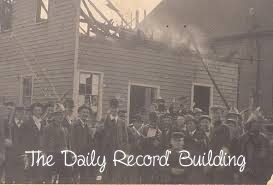
1898 – White supremacists, marching in a procession 2,000 strong, battled black citizens in Wilmington, NC in an explosion of violence two days after a part-black fusion slate won elections in Wilmington, then the state’s largest city and with a black majority.
The white mob, led by former Congressman Alfred Wardell, attacked the city’s black newspaper, Daily Record, burning down the building. They ran officials and community leaders out of the city, and killed many blacks in widespread attacks. The Wilmington Light Infantry and federal Naval Reserves, ordered to quell the riot, became involved with the rioters instead, using rapid-fire weapons and killing several more black men. Both black and white residents appealed for help to President William McKinley, but his administration did not respond. After the riot, more than 2,100 blacks left the city permanently, having to abandon their businesses and properties, turning it from a black-majority to a white-majority city.
During the riot, members of Alfred Moore Waddell’s Committee of Twenty-Five, George Rountree, John D. Bellamy, and others worked to facilitate a coup d’etat to overthrow the newly Republican mayor, Board of Aldermen, and chief of police. By 4:00 P.M., the elected officials were resigning and being replaced by men selected by the Committee of Twenty-Five. The newly placed Board of Aldermen elected Waddell mayor. He served as mayor until 1905.
The event – the only instance of a municipal government being overthrown in U.S. history – was nothing less than a revolution against interracial democracy. Its aftermath brought the birth of the Jim Crow social order, the end of black voting rights, and the rise of a one-party political system in the South that strangled the aspirations of generations of blacks and whites.
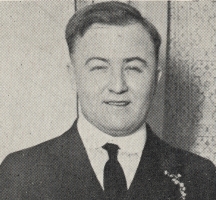
1924 – Dion O’Banion, leader of the North Side Gang, was assassinated in his flower shop by members of Johnny Torrio’s gang, sparking the bloody gang war of the 1920s in Chicago. That war culminated in the killing of seven North Side gang members in the St. Valentine’s Day massacre in 1929.

1938 – Kristallnacht (Night of Broken Glass); a series of coordinated attacks against Jews in Nazi Germany and Austria, came to a horrifying end. At least 91 Jews were killed in the attacks – which had begun the night before – and 30,000 more were arrested and incarcerated in concentration camps. Jewish homes, hospitals, and schools were ransacked, as the attackers demolished buildings with sledgehammers. Over 1,000 synagogues were burned (95 in Vienna alone) and over 7,000 Jewish businesses destroyed or damaged.
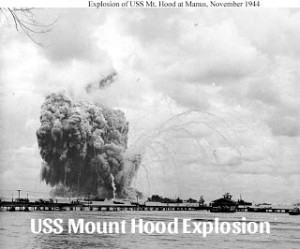
1944 – The USS Mount Hood, an ammunition ship for The U.S. Navy, exploded with an estimated 3,800 tons of ordnance material on board. No human remains were recovered of the 350 men aboard the ship or small boats loading alongside.

The concussion and metal fragments hurled from the ship also caused casualties and damage to ships and small craft within 2,000 yards (1,800 m). The repair ship Mindanao, which was broadside-on to the blast, was the most seriously damaged. All personnel topside on Mindanao were killed outright, and dozens of men were killed or wounded below decks as numerous heavy fragments from Mount Hood penetrated the side plating. A total of Mindanao‘s 82 crew members died. The damage to other vessels required more than 100,000 man-hours to repair, while 22 small boats and landing craft were sunk, destroyed, or damaged beyond repair.

1954 – The Marine Corps War Memorial (also called the Iwo Jima Memorial) was dedicated to all personnel of the United States Marine Corps who had died in the defense of the United States since 1775. The memorial – based on the photograph taken by Associated Press photographer Joe Rosenthal – features the statues of the six servicemen who raised the second U.S. flag on Mount Suribachi during the Battle of Iwo Jima in World War II.
Thirty-two foot high figures are shown raising a 60-foot bronze flagpole. The flag at the top of the pole flies at full mast 24 hours a day, 365 days a year by presidential proclamation in 1961. The entire memorial is about 78 feet tall.

1964 – Jimmie Dodd (best known as the host of The Mickey Mouse Club as well as the writer of its well-known theme song, ‘The Mickey Mouse Club March’) died of cancer at the age of 54.
1964 – At a news conference, Secretary of Defense Robert McNamara said the United States had no plans to send combat troops into Vietnam. When asked whether the United States intended to increase its activities in Vietnam, he replied, “Wait and see.” By 1969, more than 500,000 American troops were in South Vietnam.
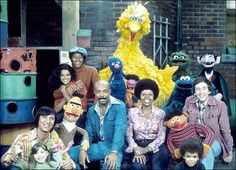
1969 – Sesame Street, a pioneering TV show that would teach generations of young children the alphabet and how to count, made its broadcast debut. The show was the brainchild of Joan Ganz Cooney, a former documentary producer for public television. Cooney’s goal was to create programming for preschoolers that was both entertaining and educational. She also wanted to use TV as a way to help underprivileged 3- to 5- year-olds prepare for kindergarten.
From the show’s inception, one of its most-loved aspects has been a family of puppets known as Muppets. Joan Ganz Cooney hired puppeteer Jim Henson (1936-1990) to create a cast of characters that became Sesame Street institutions, including Bert and Ernie, Cookie Monster, Oscar the Grouch, Grover and Big Bird.
Sesame Street went on to become the most widely viewed children’s program in the world. It has aired in more than 120 countries.
1972 – Southern Airways Flight 49, en route from Memphis to Miami, was hijacked during a stop in Birmingham, Alabama. Three hijackers boarded the plane armed with handguns and hand grenades. At gunpoint, they took the airplane, the plane’s crew of four, and 27 passengers to nine American cities and Toronto, Canada before eventually landing in Havana, Cuba.
During the long flight the hijackers threatened to crash the plane into the Oak Ridge nuclear facilities in Tennessee, insisted on talking with President Richard Nixon, and demanded a ransom of $10 million. Southern Airways was only able to come up with $2 million. Eventually the pilot talked the hijackers into settling for the $2 million. Upon landing in Havana, Cuban authorities arrested the hijackers and, after a brief delay, sent the plane, passengers, and crew back to the United States.
Cuba would extradite the men to the U.S. to serve more time after their sentences expired, and also returned the plane and the ransom money.

1973 – David “Stringbean” Akeman (musician and comedian best known for his role on the television show Hee Haw, and as a member of the Grand Ole Opry) and his wife were murdered by burglars at their rural Tennessee home. John A. Brown and Marvin Douglas Brown, two cousins and both 23 years old, were convicted for the murders. Marvin Brown died of natural causes in 2003. John Brown was sentenced to 198 years in prison and was incarcerated in a Tennessee Special Needs Facility. However, on October 15. 2014, he was granted parole after serving only 41 years of those 198 years.
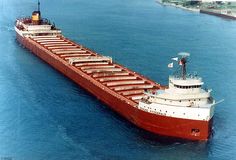
1975 – The SS Edmund Fitzgerald sank 17 miles from the entrance to Whitefish Bay on Lake Superior, taking all 29 crew members with her. Just after 7 p.m. on November 10, the Fitzgerald made its last radio transmission. Presumably, the ship, which was taking on water, was forced lower and lower into the water until its bow pitched down into the lake and the vessel was unable to recover. The ship now rests 530 feet underwater, broken in two sections.
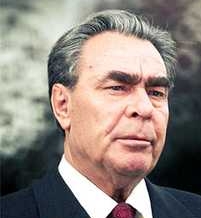
1982 – After 18 years as general secretary of the Soviet Communist Party, Leonid Brezhnev died of a heart attack. His death signaled the end of a period of Soviet history marked by both stability and stagnation. During Brezhnev’s reign political repression took on more and more ominous overtones. Dissidents such as Aleksandr Solzhenitsyn and Andrei Sakharov were harassed and sometimes sentenced to internal exile. His program to bring the Soviet military to parity with the United States drove the Russian economy to the breaking point.
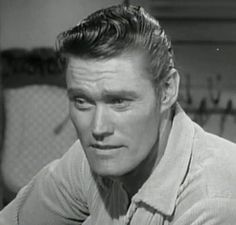
1992 –Actor Chuck Connors (best known for his five-year role as Lucas McCain in the television series The Rifleman) died at the age of 71 of pneumonia stemming from lung cancer.
Before his acting career, Connors was one of only 12 athletes in the history of American professional sports to have played both Major League Baseball (Brooklyn Dodgers and Chicago Cubs) and the National Basketball Association (Boston Celtics). Connors was also drafted by the NFL’s Chicago Bears but never signed with them.
1994 –The “Codex Leicester”, the only Leonardo da Vinci manuscript owned in the United States and the only one in the world still in private hands, was sold at auction. Microsoft chairman Bill Gates paid $30.8 million for it.
The manuscript – a folio of scientific observations and illustrations on natural phenomena such as water, light and gravity, and handwritten in renaissance Italian by the author using his characteristic mirror writing (backwards) – has been since been exhibited in Venice, Milan, Rome, Paris and New York.

1997 – Judge Hiller B. Zobel reduced the second-degree murder conviction of British au pair Louise Woodward to involuntary manslaughter in the 1996 death of 8-and-a-half-month-old Matthew Eappen. Woodward, who had spent 279 days in jail, was sentenced to time served. The case generated enormous publicity on both sides of the Atlantic and sparked a debate in the U.S. over whether working women should stay home to care for their children if they could afford to do so.
Judge Zobel overrode the jury’s decision and reduced the murder conviction to involuntary manslaughter because he believed Woodward had injured Eappen in a state of “confusion, fright and bad judgment, rather than rage or malice.”

2001 – In the wake of the September 11 terrorist attacks on the World Trade Center in New York City and The Pentagon in Washington, D.C., President George W. Bush addressed the United Nations to ask for the international community’s help in combating terrorism around the world. He also pledged to take the fight against terrorism to any place where terrorists were harbored.

2006 – Actor Jack Palance (won an Emmy Award for Best Performance by An Actor for his role in Requiem For A Heavyweight, and nominated for three Academy Awards for Best Supporting Actor; Sudden Fear, Shane and City Slickers, winning in 1991 for the latter) died of natural causes at the age of 87.

2009 – John Allen Muhammad, mastermind of the 2002 sniper attacks that killed 10 in the Washington, D.C. region, was executed by lethal injection. Lee Boyd Malvo, his accomplice in the murders, was sentenced to six consecutive life sentences without possibility of parole and is incarcerated at Red Onion State Prison in Virginia.
Compiled by Ray Lemire ©2015 RayLemire.com. All Rights Reserved.